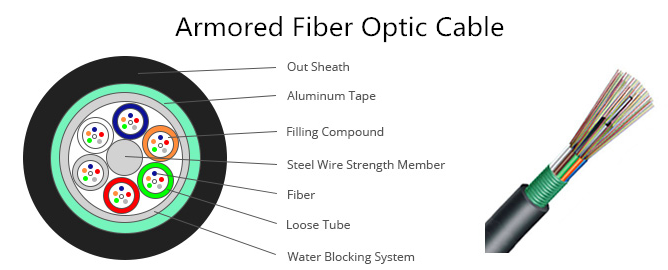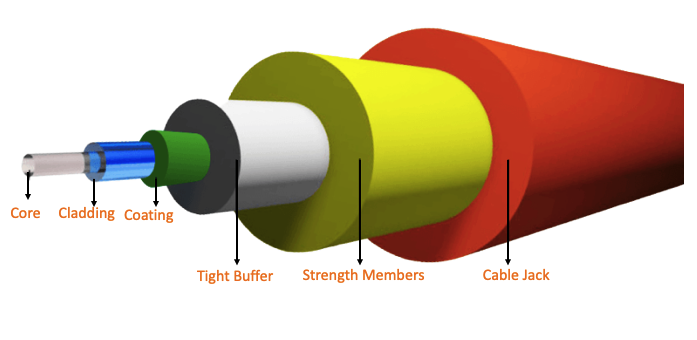Optimizing Cable Structure for Indoor and Outdoor Networks

Optimizing Cable Structure
Optimizing cable structure is essential for ensuring the efficiency and reliability of both indoor and outdoor networks. Proper installation and management of fiber optic cables play a critical role in maintaining optimal network performance. Adhering to indoor cabling standards and outdoor cabling regulations is vital for ensuring the stability of the network infrastructure. Effective cable organization and adherence to cabling design best practices are key factors in optimizing network infrastructure for seamless operations.
Passive Optical Network
Understanding Passive Optical Network
In the realm of network infrastructure, passive optical networks (PONs) serve as a crucial foundation for efficient data transmission. These networks leverage advanced fiber optic cables to distribute signals across various endpoints, offering a high-capacity and cost-effective solution for network connectivity. Unlike traditional active networks, PONs operate as non-powered systems, relying on passive optical splitters to manage signal distribution without the need for active electronic components.
Key Benefits of Passive Optical Network
The deployment of a passive optical infrastructure brings forth several advantages for network operators and end-users alike. Firstly, PONs are renowned for their reduced power consumption and lower maintenance costs compared to conventional active networks. Additionally, these systems offer heightened security measures and scalability, providing a robust foundation for expanding network operations while ensuring data integrity and confidentiality.

Indoor Cabling Standards
Compliance with Indoor Cabling Standards
Adhering to indoor cabling standards is imperative for ensuring the safety and optimal performance of network infrastructures within buildings. These standards, such as TIA-568 and ISO/IEC 11801, provide comprehensive guidelines for the design, installation, and maintenance of structured cabling systems within indoor environments. By complying with these regulations, network operators can guarantee the reliability and efficiency of their internal network wiring.
When following industry standards, organizations prioritize the implementation of best practices that contribute to signal integrity and minimize potential maintenance issues. Proper cable management techniques are essential in reducing signal interference and ensuring seamless data transmission throughout the indoor network infrastructure. Furthermore, utilizing high-quality materials and connectors not only aligns with compliance requirements but also plays a pivotal role in establishing robust and dependable connections across the indoor network.
Best Practices for Indoor Cabling
Incorporating best practices into indoor cabling processes is fundamental for maintaining a high-performing network environment. By prioritizing proper cable management techniques, organizations can effectively reduce signal interference and mitigate potential maintenance challenges. Additionally, utilizing top-tier materials and connectors ensures reliable connections throughout the internal network infrastructure, thereby enhancing overall operational efficiency.
Outdoor Cabling Regulations
Adherence to Outdoor Cabling Regulations
When it comes to outdoor cabling, adherence to specific regulations is paramount for ensuring the integrity and durability of the network infrastructure. It is crucial that outdoor cabling installations comply with local building codes and environmental regulations to guarantee safety and performance. Moreover, weatherproofing measures and proper burial depth are essential considerations for the successful implementation of outdoor cable systems.
Challenges in Outdoor Cabling
Outdoor cabling presents unique challenges due to exposure to various environmental factors. Protection against moisture, UV exposure, and physical damage is a primary concern when establishing outdoor network wiring. To address these challenges effectively, utilizing outdoor-rated cables and enclosures becomes imperative for creating a robust and durable network infrastructure capable of withstanding external elements.
Incorporating best practices in outdoor cabling design ensures resilience against environmental factors while maintaining optimal network performance.

Efficient Network Management
Effective Network Cable Management
Efficient network cable management is crucial for ensuring smooth operations and timely issue resolution within the network infrastructure. By implementing organized cable routing, network operators can significantly enhance network performance while simplifying troubleshooting processes. Additionally, labeling and documenting cable connections play a pivotal role in streamlining network maintenance activities, allowing for quick identification of specific cables and their respective functions.
Optimizing Network Infrastructure
Optimizing the network infrastructure involves regular inspections and maintenance to uphold the longevity of network cables. By conducting routine checks and addressing any potential issues promptly, organizations can ensure the reliability and efficiency of their network systems. Furthermore, implementing scalable and adaptable network designs prepares the infrastructure for future expansion, enabling seamless integration of additional components or endpoints as the network grows.
Incorporating effective management practices not only enhances the operational efficiency of the network but also contributes to its overall sustainability and adaptability for future requirements.
Maintaining Reliable Networks
Ensuring Network Resilience
Maintaining reliable indoor and outdoor networks hinges on the fundamental aspect of cable organization and adherence to robust cabling design principles. By prioritizing meticulous network infrastructure management, organizations can safeguard against potential disruptions and ensure seamless operations.
Efficient cable organization practices play a pivotal role in mitigating potential issues and streamlining troubleshooting processes. Furthermore, proactive measures such as implementing scalable cabling design strategies contribute to the adaptability and sustainability of the network infrastructure, preparing it for future expansion.
See Also
2024: Cost-Effectiveness of Singlemode vs Multimode Fiber Optic Cables
Understanding ADSS Cable and Fiber Optic Strength Member Solutions
Comparing the Advantages of FRP and Steel for ADSS Cable: A Comprehensive Guide
Exploring LC Series Fiber Optic Breakout Cables and Duplex Multi-Mode Fiber Solutions
LC Series Fiber Adapter Panels: OS2 Single Mode vs. OM4 Multimode Solutions
About US
Follow Us
AnetFiber company's main products are indoor and outdoor optical fiber cables, outdoor waterproof pre-connected fiber-to-the-home products, PLC optical fiber splitters, optical fiber jumpers and pigtails, MTP®/MPO high-density big data product solutions, optical fiber field quick connectors and research and development molding, injection molding and production of optical fiber distribution boxes, optical fiber chassis cabinets, the market has expanded to the world, Europe, America, Asia, the Middle East and Latin America.
Address
Shenzhen City, Baoan District, Yanluo Street, Tangxiayong Community, Yangyong Industrial Road, Tonggangda New Energy Vehicle Park 406
Contacts
+86 199 2655 3586

